M-Prize Winner
This story is one of ten winning entries in the Long-Term Capitalism Challenge, the third and final leg of the Harvard Business Review / McKinsey M Prize for Management Innovation.
DaviPlata is the first massive e-money platform in Latin America, and one of the first in the world, which was conceived initially as a solution to reach the bottom of the pyramid, but soon became the new way to manage cash transactions in Colombia. It is giving the country and the community the opportunity to access a new, free and self-served way to financial inclusion.
Davivienda Bank, as part of the Bolivar Group, believes that the human being is an endless source of value. This concept represents the center of its culture. The bank shares the Group´s Higher Purpose: to Enrich Life with Integrity. These concepts remind every member of the organization the reason why they are part of the Bank; regardless of their geographic location, or their role in the organization.
In this context, the talent of more than 11,000 employees is turned into a constant passion to generate value in a sustainable way to its different stakeholders. It’s also the reason to develop innovative concepts that revolutionize the market, while being conscientious of the communities in which we have presence.
If we look deeper into Davivienda´s DNA, we find the answer to why DaviPlata, as it is, could only be created by Davivienda. Three major management practices set a fertile soil to harvest this product, service and platform. First: Mid and Long Term Planning, aimed to achieve long-term competitive advantage. These advantages must cover all of three major areas required by us in our sustainability efforts: Economic, Community and Environmental. Second: an Innovative Culture, a culture that allows anyone, trained or not trained in our innovation system, from any type of position, to stand up and propose ideas, real breakthrough ideas, without fear of going beyond his or her boundaries. This is important, in order to lead a real change in the management “bureaucracy”. It is a “democracy of ideas”, based on several guidelines and practices: a) we constantly form project teams that are both cross-functional and cross-hierarchic. The teams are facilitated by "Innovation Coaches" who are trained to guide discussions according to the merit of an idea, rather than the rank of its owner; b) innovation efforts are designed in "concentric circles" so as to constantly expand the number of participants. To date, more than 7000 employees have participated in one innovation activity or another. Third: Our belief in our employees as true Human Beings with an Endless Source of Knowledge. This sounds rhetorical, but in reality, it has helped the organization to create innovations that have yielded our biggest, longer-lasting performance advantages. It was also one of the key drivers to search for a powerful innovation methodology and to make sure that a large number of employees has been empowered to utilize it on an ongoing basis.
Our mid and long term planning has been the result of an analysis of three major questions: Where do we want to be in 5 and 10 years? (from an Economic, Social and Environmental point of view.) Are we moving and creating value as rapidly as the world around us? How are we going to achieve this? The answers to these questions are discussed in a planning committee; then executed, and finally communicated to the whole organization.
The above flows naturally because we have an ideal corporate government, which is transparent and visionary. It has supported and monitored the management practices that today are our pride and a powerful differentiating factor in the markets we serve through perseverance and organizational coherence.
The following stand out amongst these practices:
- Integrity in our beliefs (principles and values) and the use to these in our business. Our history proves our capacity to refuse those clients or business’ lines that are not aligned to our principles. For instance, we had not approved credit lines to companies we considered “environmental threats”; therefore, we had improved the commercial conditions (interest rates, terms, etc.),
- We have incorporated a special ability to break through traditional hierarchies when facing new challenges. We have created interdisciplinary task groups with their own resources and attributes, which they have used to advance, create and break paradigms through training in innovation methods. We use a “Commando Team Scheme,” a team integrated by individuals from different departments with diverse skills and ideas that come from any type of position in the organization, to embrace these challenges. These “Commando Team” have the autonomy and empowerment to analyze, design and deploy plan of actions. An example of one of these “Commando Teams” is the team responsible for the DaviPlata project.
- The capacity for learning is another skill the organization has developed. It has allowed us to enter new businesses in which we have learned with care and humility, but mainly with perseverance and discipline. Based on this these concepts, we have innovated. A good example of this learning capacity is the program “Constructora Bolivar’s community.” When you think on the concept a “Construction Company”, the last thought that comes to your mind is of a company working with its clients in the creation of coexistence standards for neighborhoods, training programs on how to negotiate family disputes, and programs to create an environmental friendly space to live in. This is what the “Bolivar Excellence Award” strive for, to improve quality of life of those clients for whom our product is the first “formal housing solution” they will have in their life.
- Our mission of returning to society more than it has given us is an element that has defined our enterprise´s history. Hence, our support for democracy, cultural and artistic expressions; and for the diverse participants in our community, has become a significant part of what we do. An example of this support is the “Simon Bolivar Award”, which was created by Seguros Bolivar as an stimulus for the professionals in journalism, and as an acknowledgment of their essential role in strengthening our democracy.
- Similarly, our relationships with our competitors stand out for being characterized by transparency and creating a healthy competition into the businesses in which we coincide. We are conscious of being an important role model for our community; thus, we share our good practices with competitors, governmental entities, and trade associations. We are convinced that sharing our strategies helps to contribute to the building of a better country. At the moment, we have conducted more than 40 “Innovation Sessions” using our “SIT Methodology” with regional governments, national armed forces, central government and social organizations. We have, as well, shared strategies directly with competitors in order to solve issues such as : how to redefined subsidies programs, how to find the best way to improve quality of life of armed forces members, or how to deal with the bad image of the financial sector.
- The development of our people and their quality of life holds a special interest for the enterprise, that's the reason we support training and educational programs that contribute to their performance and professional growth.
Since we believe the human being is an endless source of knowledge, our first milestone to achieve this principal is to hire the best talent available. Davivienda seeks to hire people with very solid principles and values whose personal beliefs fit into the organization’s principles and are committed not only to their work, but to the community, their family and personal daily growth using their skills and capabilities. Once inside Davivienda, the deep-rooted culture helps our talented personnel to really burst into what we call “the world class employees.”
Colombia has low levels of financial inclusion, about 38% of the population is unbanked. If the figures are analyzed in more detail, the number is higher if we take into account the percentage of the Underserved Population (population that has a financial product but does not regularly used it for its monetary transactions). But in contrast, Colombia has a 105% cell phone penetration. Virtually, everyone in the country has a mobile device in hand; and most important, Colombia has a 100% geographical coverage on network infrastructure.
The current financial services and products delivered to the market are based on high cost operations, branch based transactions, and heavy operational processes. Therefore, the pricing model is forced to cover these costs, which does by charging fees on almost every type of transaction, product or service. This, added to the continuous complaints from customers and social sectors about the pricing model, led the organization to an innovative process aimed to solve three major issues:
Capillarity: The truth is that Banks face a reality: the traditional model delimits the capacity to achieve full penetration into a specific market. Davivienda was not the exception, our branch-based operations and face-to-face service model, led to high service fees charged in order to cover the strong cost structure needed to serve all the services and products. Our paradigms were: First, how do we reach potential clients in a virtual way which would be different than internet banking? Secondly, how do we include into the financial system citizens without having to pass on them all the government regulations? Third, how do we instill a safe but faceless service model? Fourth and last, how do we reach every corner of the country?
These Paradigms came out from an analysis of what we were doing over the past years, and deciding on how we could be more effective reaching a broader segments of the population. As Einstein said, “insanity is: doing the same thing over and over and expecting different results”. Therefore, these questions were quite obvious in order to really expect different results. We needed to make things different, we needed to move to a virtual “end to end” form to relate with our clients´ needs. We had to understand the regulation as a framework in which we could move in, and then convince regulators to adapt the framework to achieve what we all wanted. We had to move the clients to the “front end”, where they would actually have the power to experience the product by themselves without a sales representative guidance. This would mean a more risky approach, but a more real one in a virtual world. And finally, we needed to find a solution to overcome the fact that we live in a complex geographical country, which added to its mayor security issues, makes reaching certain areas very difficult. The infrastructure in place was not the ideal on either one of the above.
Ease of Use: Bank products normally are not “top of mind” in innovation, or nor are they user friendly; except for internet banking. In fact, bank products have always been perceived as traditional, rigid and most of the time, boring. Our innovative challenge was to develop a service that could be used by any kind of costumer (banked, unbanked or under banked) and, at the same time, be very user friendly. We needed to offer the “bottom of the pyramid” products and services that were “cool”, friendly, modern, and viewed by all customers as the best of the best.
Pricing Model: Financial services can be considered expensive, especially to low wage earners. For middle and high income wage earners, financial services are a necessity of life; thus, these services are viewed as an inexpensive and hassle free. Then, the challenge was defining how to deliver financial services to all without the disruptive noise of service fees and overpricing complaints. We needed to offer value to clients and non-clients, rich and poor, banked and unbanked. Could we actually be aggressive enough to price it very low or even think of the possibility of doing it for free? What would our business model look like? Could we make it profitable?

DaviPlata was born from an initial initiative to create savings accounts for the population at the bottom of the pyramid. In true essence, DaviPlata was born without knowing exactly the scope of what we were about to embrace. We just had a dream in mind. But companies’ don´t bet on dreams, they bet on ROIs, facts, numbers and P&Ls. How come an organization like Davivienda sometimes bets on just a dream? Part of the answer to this question is found in the management practices and values mentioned before. Similarly, part of it has to do with our focus on creating a platform, product and service to an unknown, but very important client; the bottom of the pyramid.
When we asked ourselves the question: Are we moving and creating value as rapidly as the world around us? We faced the fact that we didn´t know exactly how fast the world was moving. Therefore, we had to bet on speed and ingenuity to try to get it right. This bet was taken based on a previous analysis of where we see the business going, and where the world was going in terms of uses, trends, restrictions, etc. The simple ROI analysis, which considers only the economic side of a product, is no longer our way of doing business. We now also necessarily consider the Social and Environmental issues.
Moving from the single economic ROI to the integrated Economic, Social and Environmental approach, was not an easy task. As a traditional financial organization, the analysis of the project could have been to forecast the revenues, allocate the resources, measure the costs and expect an estimated financial return. Instead, what we considered when embarking this new project was to consciously analyze how big our social impact was going to be; establish if we were actually rolling out a real financial inclusion breakthrough, or improving the quality of life of the communities we will embrace; and finally, defining if this project was helping us to create a better and sustainable planet. If those questions were responded properly, then we had created a very profitable project in terms of social and environmental return; and as well, a way to transfer wealth and life richness to the society.
However, how did we do it? First, we used those questions above as the baseline to define the objectives. Then, we tried to create a product aimed to fit into the answers to those questions. Finally, we worked on solving the issue of how to turn it into a profitable economical product.
We initially had the task to create a new type of savings account for the very poor, as dictated by the banking authorities. Our first glance of the solution was to use the same accounts just changing some minor features such as cheaper monthly fees, fewer transactions and a different kind of communication strategy. Basically, it consisted in using the same strategy we has used before: branch enrollment, contact center, etc. After our first analysis, we understood that to serve the bottom of the pyramid client these ideas didn´t make any sense. The financial regulators wanted the banks to create an Electronic Savings Accounts for the less favored citizens, but the fact was it didn´t have anything truly innovative, and was not going to truly be “inclusive”. Both of their solutions to inclusion, and our current product breath, did not solve the necessity.
We decided that a true paradigm shift was needed. We realized, therefore, that the best course of action would be to utilize the innovation platform developed within the Bolivar Family, based on the SIT – Systematic Inventive Thinking methodology. SIT (www.sitsite.com) is a methodology, developed and applied globally in the past 17 years in 64 countries. The method, which has its origins in the Russian TRIZ approach, is widely used for new product development, problem solving, strategy, conflict resolution and marketing communications. It consists of a series of tools, principles, procedures and guidelines that enable the generation of ideas and their implementation, both on an individual and an organizational level, creating a culture and practice of innovation. The Bolivar Group adopted this method in 2007 as a key component in its drive to create an innovative organization. After a full year of piloting the method in various companies of the group and a variety of contexts, a full-blown three-year program was launched, with strong top-down commitment, which is considered absolutely crucial to the success of the effort. This commitment is expressed in (among other elements): a) an important economic investment in external professional support, b) many thousands of man-days spent on training, c) special budgets for developing and implementing new projects, d) sending employees abroad to expand their professional experience and personal horizons, e) dedicating the most important yearly and periodical company events to various aspects of innovation, and others. The Bolivar Group has since trained more than 600 "Innovation Coaches" of various types and sepcialties, as well as around 7000 employees, both in the company’s headquarters and in all of its regional offices, by giving them a set of tools for innovative thinking. We have also conducted several hundred specific innovation projects, with clearly defined goals and an extremely high level of implementation rates, of which the DaviPlata initiative is a leading example. In this case, the main innovation tool of choice was “Subtraction”. The idea behind this tool is to review all the components of a product, system or process, identify a component that appears to be totally essential, and subtract it. We reviewed our process of acquiring a new client and opening an account. Some possible components were:
- Branches
- Debit Card
- Forms
- Signatures and Fingerprints
- Paper
- Fees or any type of charge
As anyone would imagine, the initial reaction to the thought of subtracting any of the above was surprising and received with rejection. Some of the reactions were: someone had lost their mind! This cannot be done! But that is, of course, part of any innovation process. Following the steps defined in the methodology, we continued with the process asking the team to suspend their disbelief for just a short while and instead asked them to consider only the benefits of each possible subtraction. Several strong benefits immediately came to mind, enough of them actually, to justify further exploration and move on to the next step – considering the challenges and problems, and identify possible solutions.
The first stage was to imagine what people can really use, accept or interact with; what were their fears, desires, expectations, etc. We took some “field trips” to some low income neighborhoods in the larger cities in Colombia: Sierra Morena – Bogotá, Aguablanca – Cali, Soledad – Cartagena, Santo Domingo – Medellin. For us, this was a different way to do market research. Usually, we have paid companies to run focus groups, in-depth interviews, etc. As Steve Jobs said: “It’s really hard to design products by focus groups. A lot of times, people don’t know what they want until you show it to them.” So we decide to go out and try to understand what people wanted, not by asking directly “what do you want”, but by trying to understand how people behave in real life without any kind of prejudice. At that time the primary DaviPlata development team was a two person team, so they move for over a week to each location, they got involved in the everyday life, talking to the locals about anything but financial issues. We wanted to know what their worries were, how they interacted with other members of the community, who were the local trend-setters, what motivated them to do and to buy things, to change patterns.
Another activity we performed to do the “human” market research was to get involved with the distribution chain that supplies products to the “small merchants” within those communities. Here, we needed to understand how the people, not the companies involved, behave and think. The team actually got into the delivery trucks and did the round trips into the areas selected visiting and interacting with the owners of “small mom and pop shops with the “delivery crew”. This activity also gave us an input into the acceptance side of the DaviPlata ecosystem. In parallel, we studied the mobile banking initiatives related to Financial Inclusion in Africa, Asia, and Latin America. And finally, we tried to understand what the regulatory framework would allow us to do.
DaviPlata came to life in April 2011. It was basically an M-Wallet that could be activated by any person using his/her SIM card on their cell phone. The transactions allowed at that moment were:
- P2P (person to person) transfers (DaviPlata to DaviPlata or DaviPlata to Savings or Checking Accounts)
- Cash In – only from Daviviendas´ Saving or Checking Accounts, Bulk Payments
- Bill Payments – Public and Private
- Top-Ups
- Withdraw Money – ATM
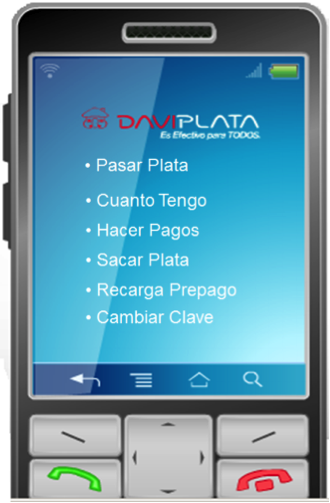
Figure 1. DaviPlata Options Menu.
The language used in the Options Menu was one of the most radical risks we assume in the project. It was the first time we decidedly changed the tone we use to communicate with our clients. We went from technical and rigid words to a more colloquial and close to the client language. Figure 1 shows the main options menu.
There were many innovations on the technical side, but the major innovations were on the ease of use and delivery of the service to the end user; it was free.
First, the enrollment process: the problem to solve was how to enroll someone who is “faceless”, not using a branch office or the internet. In banking, “know your client” is everything. So, how do we enroll someone we don´t know, of whom we do not have any banking record, nor have any credit information available? The banking sector also needs to check if there is any drug related tie or conviction. So, how do we go about it? We actually did know how to get the info life and quickly. We solved the problem using the access that the banking industry has to central ID database controlled by the government. Through this database we could check whether the information delivered to us through the cell phones was in fact real data from a the government issued ID. That information was then crossed with the OFAC (Office of Foreign Assets Control) and other bank controls databases. Nevertheless, the most important control is the control performed posterior to the enrollment. The key for this control is to know how the users behave, and identify which are typical or untypical transactions. One of the most important decisions that took place during the project was to try to understand the end user from a completely different frame of mind than the one used in the traditional banking side. Hence, DaviPlata has its own risk and compliance areas, which are specific teams that created a particular “risk model” for DaviPlata, based on the community behavior rather than the individuals’. For example, we deal with two important communities; subsidy beneficiaries and armed forces personnel; the behaviors of these segments of the population are completely opposite. If the risk analysis were to be conducted using the enrollment information, we would have to turn back to the time and cost consuming process of forms to fill, physical identification, etc. In this case, we build a set of patterns for each community and use it to control any type of “untypical” behavior. This set of patterns is built by selecting a statistically significant sample, and creating an “usual” profile of the member of the community and then used it as the control reference.
DaviPlata was deployed as a completely independent unit within the bank, with its own areas of operations; projects, marketing, business, commercial, risk and AML (Anti Money Laundering), and even a area for human resources. During an executive committee, where the timeline of the project was being analyzed, the Bank´s President made the following observation: “This is so different from what we usually do, so progressive; that I wonder If we should implement it within the actual organization. We should think a new and different structure to undertake this challenge.” By having a separate management lab, we could try different approaches to management directives, without impacting the current structure set in the bank.
The core culture and management aspects of the Davivienda model were kept: principles and values, the importance of believing in each employee, our innovation culture, and the approach to balanced economic, social and environmental results. The desired changes were: less hierarchy, more result driven management, rather than supervised management; a “democracy of ideas” environment, less bureaucracy, and a more efficient control of costs. In order to accomplish this, DaviPlata was staffed with a total of 46 employees, managed by an Executive Director and an Executive Committee. Today, the unit structure has 4 “functional clusters” and 3 “staff areas”. The 4 clusters are: Business, Commercial, Experience and Projects, and the 3 staff areas are: Risk, Compliance, Human Resources and Corporate Social Responsibility. In each cluster, we have employees with different talents and experiences that work toward a specific goal, without a direct dependency between one another, no matter the hierarchical position. All employees can equally postulate ideas, perform the tasks and present them.
The “Initiative Committee” is a monthly meeting where any employee that has an idea can present it, explain its impact (Our Work, Family, Community, Planet or Personal Higher Purpose), and become part of the team that is going to undertake the task.
DaviPlata, as a separate unit, can generate big levels of specialization and independence. Even though, as a Davivienda´s business unit, it can establish and take advantage from the synergies from other departments within the actual structure.
DaviPlata is at the moment making some changes in the way people get evaluated, and how this will directly impact their salary scheme. For instance, as part of the evaluation process, completing milestones for its own personal higher purpose is a must, which will be shown in their “DaviPlata Performance Chart”. The “DaviPlata Performance Chart”, is an evaluation tool that will reflect how our people balance these five aspects, and how they perform in each one of them:
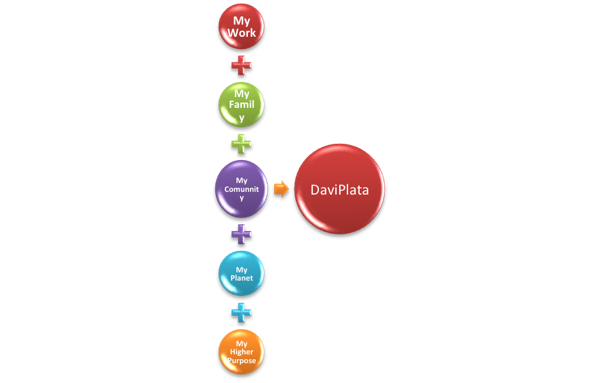
We are searching for individuals that can impact other people´s lives by acting as a role model, not only on a professional level, but in all aspects of what we consider principles and values worth enough to live for.
From the service side, two great innovations were to take place: First: can we deliver a great product with a high added value? And, Secondly, can it be done in a substantially more cost efficient way? To achieve this, we decided to outsource the clients’ contact center to lower costs and lower time to market for new features or tool deployments. Our product provides service only to cell phone users; thus, the contact numbers are a short code 80888, and a toll free #688. Both, the short code and the toll free, are answered using, as a first layer, automated responses. The short code that manages the SMS queries is answered by an artificial intelligence platform named Blue Messaging. The toll free works with an IVR entrance and then, depending on the user inquiries, we can put him/her through to a call center agent or give him/her a call back.
Another of our main concerns within the project was how to convert the electronic/virtual money into real one if we could not use any kind of debit or prepaid card to withdraw the money from an ATM. At this point, we developed a transaction into our ATMs that allows DaviPlata users request for money from any Davivienda’s ATM using an OTP (One Time Password) which was given by the DaviPlata menu. This transaction was a major innovation, it was the first time that a massive e-money platform uses this kind of technology, and actually allowed us to enter a niche market that was not initially considered. Through this invention, we had the capacity to change the money remittance model. For domestic remittances, the OTP originate withdraw money transactions was to be used, not only by the DaviPlata owner, but for any kind of beneficiary anywhere in the country.
In this second phase, after working directly with the government, specifically with the Treasury department, Ministry of TIC ( communications and information technologies ), Banca de las Oportunidades (banking for the poor), and the Banking Association; the regulatory framework for Electronic Deposit was reorganized and established in December 2011. This gave us the possibility to enhance the innovations available for the DaviPlata platform. Right now DaviPlata can be “fed” not only from the saving or checking accounts in Davivienda, but also we have allowed our competitors to participate in this product through their accounts, credit cards and direct cash deposit in a Davivienda branch or an NBC (Non-Banking Correspondents). One of the most recent breakthroughs is related to the international remittance business, whereby a DaviPlata user can receive remittances directly to its DaviPlata account (in his/her cell phone).

DaviPlata Ecosystem
A big part of the DaviPlata Ecosystem is the acceptance side, and here, once again DaviPlata plays an important role in helping the country get into the discussion about economic formality of small merchants as they will be playing an important role in the acceptance side of the ecosystem. Currently, in Colombia 55% of all retail sales taken place with small merchants. Also, differing from the tendencies seen elsewhere, when we compare traditional channel distributors (mom and pop stores) vs. more modern channel distributors (large retail and supermarket chains); the mom and pops are growing faster.
Keeping in mind that this is not a non-profit organization, but an actual business, the economics are still important for the success and sustainability of the project. We believe that a financial transactional service can be deployed as a two-sided market, where the user is able to access a sound and secure platform to perform most of its monetary transactions for free; and other users group is willing to pay to get involved with the ecosystem created around the platform. Here is where the pricing model is totally redefined. As a key rule of a two-sided network pricing model, the more price sensitive side is subsidized (the user of the platform) by the side who wants these users to interact with them (bulk payments, utilities companies, collection departments, government subsidy disbursements, Telco and other provider top-ups, etc.). DaviPlata´s vision in the medium term also considers the use of the platform as a way to deploy other products and services to the population. shows more clearly this approach.

The following video provides a short overview of DaviPlata.
Technical. In-house vs Outsourced Development. Which kind of Platform to choose, SMS, STK, USSD, J2ME, APP? Issues regarding stability, continuity of the business, broadness, contingency, etc. Negotiations with the big and very powerful telecommunication companies, (all transactions travel through their gateway).
This issue was solved based on a primary premise: which technology would allow us to keep the premise of “financial inclusion for ALL”. This premise meant that we could not use a technology that had any kind of restriction, or needed to be deployed in a specific manner. We needed a previously deployed technology available to any kind of device, data plan or operator. This doesn´t necessary mean that we discarded the other technologies forever. As a matter of fact, we are currently making the proper developments to use DaviPlata with some of the other technologies previously analyzed.
We made a decision to outsource the technology, rather than make in-house developments or implementations. We saw this as a controversial Management decision because the usual way of doing things at the bank, when undertaking big and complex technical developments, is to do it ourselves to have the perceived advantage to control the software and the capacity to deploy exclusive functions to the client.
Legal - When we started, there was not a clear regulatory framework that would allow us to expand the model as we initially intended to; therefore, it was necessary to work hand-to-hand with the government, treasury department, communications ministry, regulatory entities, etc.; to create this framework. Another big issue was the AML concerns. These were addressed by first developing our own risk model and then having a discussion with the regulators.
As mentioned above, the legal issues were addressed in two phases. First, we worked with our legal department to try to identify how we could start operations given the current regulatory framework. Secondly, we needed to build the ideal regulatory framework that would be needed to be taken into consideration by the different government regulatory entities.
Cultural Acceptance. This was one of the biggest fears of our project: Was the Colombian population was really prepared to receive an alternative proposal for a transactional service? Can the cell phone actually work as a mobile wallet? Cell phones are stolen every day, will consumers trust the system? Would low income earners understand the concept of electronic money?
The ease of use was one of our biggest concerns at first; but actually, it faded away very fast as soon as we started talking to the product areas of the telecom companies. They explained to us how the “added value products”, such as back tones, ring tones, horoscope, joke of the day, screen savers, etc.; were growing and consolidating as one of the most sounded sources of revenue for the companies. These are not products for smart phones only, but for all cell phone users. People use virality to learn how to download the ring tone, the screen saver, to find the short code to ask for the joke of the day, etc. One of the lessons we learned clearly at this point, was that if you are going to use technology or processes from another sector, you need to understand it deeply in order to get the most out of it.
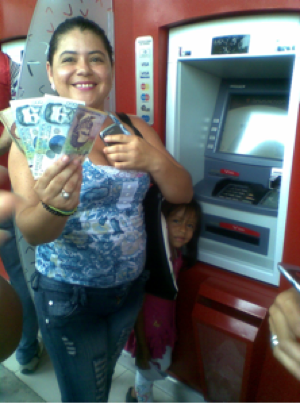
We found one powerful key point trying to solve the dilemma of ease of use. If there is money inside, people will find a way to get it out. We found that virality plays a big role in the adoption process of the product. To illustrate more clearly this point, let me tell you a story of one of the communities where DaviPlata is operating. When we piloted the government subsidy disbursements in nine different municipalities, these municipalities were all very different from one other. Our biggest fear was to be able to explain to the users how to withdraw the money. Six of the municipalities were small and three were large. The small localities were not a problem for us; we were able to send “DaviPlata advisors” to help the users while withdrawing the money from the two ATMs in each locality. The large sized municipalities became a challenge since we could not hire enough advisors to cover all sixty or seventy ATMs that we had in those locations. Thus, we bet on virality; we hoped it would work as it did with the “added value products” from the Telecoms´ companies. The idea was that people would help each other to understand how to withdraw the money, and it actually happened that way. Approximately 99 percent of the users that received the subsidy withdrew the money within the first three days, and about 37 percent performed some other types of transactions, like top-ups, bill payments, or transfers.
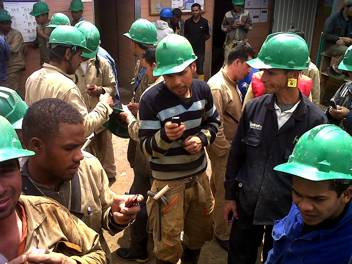
Additionally, when users pull out their monthly payroll from the ATM, they started to use DaviPlata for other type of transactions. Nowadays, they believe there is value in the information displayed in the cell phone.
Organizational. Can a totally independent business unit fit within the “accepted” structure of a big and successful bank? How do we go about breaking the traditional paradigms of the actual banking model? Is it possible to re-think the traditional business model from within a very successful organization?
This can be accomplished only by an organization with a management practice explained above; an organization with an already “systemic” innovation process and with principles and values that cherish human creativity as the most important asset of the organization. However, this has not been a smooth process since there are egos involved, traditional and rooted management practices, hierarchy structures to break, and a different way to adopt the ideas that doesn´t come from the higher management. But for us, it has been a great journey that has worked relatively well, keeping in mind that “management innovation” is one of the most difficult innovations to undertake.
DaviPlata is an ongoing project; we are continually learning. Every day this project makes our team gasp with new and revealing findings, and stretches our imagination on how to overcome new challenges. Within this first year, we can summarize some very fulfilling results:
Government – Private Sector alliance. DaviPlata has given us the visibility to become one of the first real Government – Private Sector alliances in the country by we understanding the needs of the government. For example, with the payment of subsidy, we put in place our products and knowledge to help the government reach the neediest by offering a free, easy to use, efficient system, where all parties involved are better off. In essence, the payment of subsidies and use of subsidies through DaviPlata is easier, faster, more transparent, and cheaper. An additional benefit of this alliance is Davivienda´s participation as one of the “Social Innovation Pioneer Companies” to help the program stated by the Presidency of the Colombian government called the “Social Innovation Center”. This center has the task to redefine the way social issues are addressed, specially the fight against poverty; but looking at it from an innovative point of view.
Financial Inclusion. right now DaviPlata has almost 600,000 users, of which 310,000 are from the unbanked population. Colombia is the first country in the region to have an electronic money platform fully operational, growing and getting to more regions and economic sectors every day. In addition, the creation of the merchant´s acceptance platform, will allow our users to access some 30,000 small merchants, will help us bring more and more needy people into formality.

Cost Efficiency. The question regarding how to deliver a great product with a high added value in a more cost efficient way is one of the most important findings for the organization. Here is a comparison that shows this result.

Social benefits
Martha´s Story
Martha is one of the 3 million subsidies beneficiaries in Colombia, who used to wake up at 2 a.m.to get ready to make line at the bank at 3 a.m. in order to cash out hers subsidy. She used to wait on line from five to six hours to finally get her turn, and cash the money. Then, she used the cash to send a domestic remittance, paying a 10 percent fee for the service. In order to pay hers utilities bills, she will then move to a “district collections center” where she will wait in line for another two hours to get the payment done. The remaining cash will stay “under the mattress”, because she never had the opportunity to open a savings account due to the distance she lives from the bank and the high costs it will represent to her.
Now, the story has changed. Martha gets a SMS message confirming that her subsidy is already disbursed into hers DaviPlata. She actually can pay hers bills, send money anywhere at any time, and start saving some money through her DaviPlata. For the first time, she is part of the financial included population, even though she have never shown herself at a bank branch, or signed any contact at all. Enrolling a client into a financial service using a full trough virtual, self-enrollment process is the one of the greatest innovation of DaviPlata.
Through the use of DaviPlata we are improving the quality of life of the neediest. DaviPlata has given the country and the community a real tool to “formalize”; to really create financial inclusion. Our objective is to bring into formality a large part of the informal sectors who only use cash, about US$15,6 billion. We expect to have two million clients, outrange the million transactions per month; span to transportation systems and B2B operations; and enter into the micro insurance and micro credit operations by the end of 2013.
DaviPlata will be released in the short-term in other countries of the region. Salvador, Costa Rica and Honduras will be the next communities to enjoy the Financial Inclusion for All benefits of “”.
- We now have Teams that think different, that know their business and know that dreams do come true
- We are not afraid to be the pioneer. We have to invest more time and be very creative, but the gains for all are huge.
- Innovation is not a department, but comes from everybody
- Just because it hasn´t been done, doesn´t mean it can´t be done
- Question everything, including financial regulations
- Financial services entities have the obligation to create products for the unbanked and the less favored citizens
- Use available technology used in other sector to leverage your business, in this case it was the cell phone technologies.
It is a joy to read this very inspiring case of for social inclusion in the financial system. Daviplata is definitely a model that should be expanded to other countries and empower the economic and personal development of many more people.
- Log in to post comments
Very impressive. I love how a focus on serving the poor could lead to shaking up your entire management infrastructure!
- Log in to post comments
sorry my url is http://www.managementexchange.com/story/integrated-waste-managemntgreen-... you.
- Log in to post comments
Hi Juan, great story! I guess it shows that we don’t have to reinvent the Cell Phone but used it more efficiently to provide services for the poor. Am hiving almost all the challenges outline in your story with several stakeholders in Zambia, Africa (local government, residents, banks and mobile service providers) while am trying to Launch my project. file://localhost/C:/Users/Toshiba/Downloads/Integrated%20waste%20managemnt(Green%20Re-cycle.com%20on%20face%20book)%20%20%20Management%20Innovation%20eXchange89.htm. Is it possible to ask for advice from you after ‘The Long-term capitalism Challenge’ from this platform or is it better to use e-mail (my e-mail address is patrickchanda28@yahoo.com)? Thank you.
- Log in to post comments
So now the 38%, "the great un-banked", become part of the system. Their meagre deposits are finally on the banking system's balance sheets. Through the marvels of fractional reserve banking even these people can be part of the magic that allows their deposits to be leveraged, 10, 20, 300 fold bringing even more money supply into existence through debt. The world is going through a debt/insolvency crisis and this brings the small amount of people who weren't participating in the crisis before, directly into the system. If MFGlobal can reach in and grab account holder funds at will in the 1st world, how do we expect to protect 3rd world account holders? How about we go back to one dollar of capital for one dollar of debt before expanding the participants of a flawed system. Yay!, the banks win again, at least in the short term before it all blows up.
- Log in to post comments
This is the way to get real social and
financial inclusion in Colombia and
example for the rest of Latin American
countries.
Also this is good chance to give
opportunities to people that needs
acces to banking products and improve
their life quiality.
- Log in to post comments


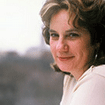

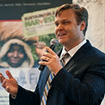
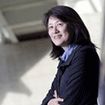



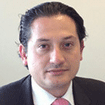
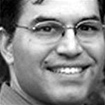
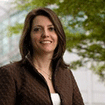
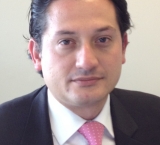


You need to register in order to submit a comment.